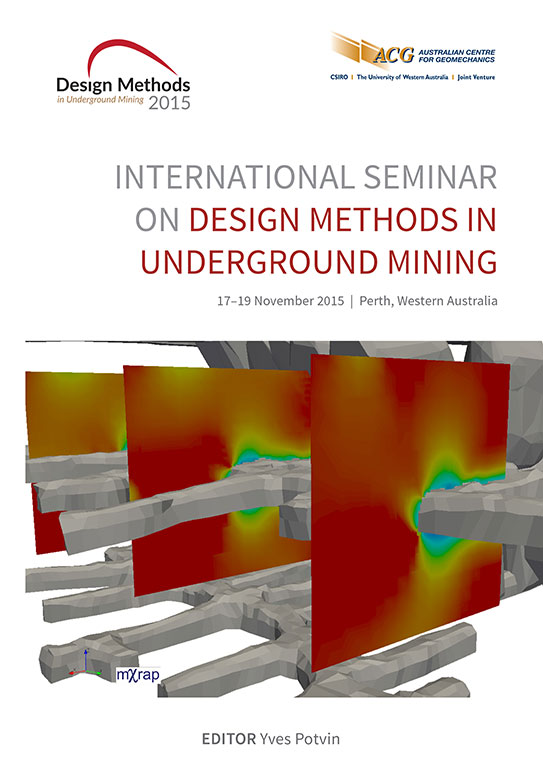Mine design impact on operating and capital costs

|
Authors: Morrison, D; Webb, R; Akerman, A; Parsons, H |
DOI https://doi.org/10.36487/ACG_rep/1511_26_Morrison
Cite As:
Morrison, D, Webb, R, Akerman, A & Parsons, H 2015, 'Mine design impact on operating and capital costs', in Y Potvin (ed.), Design Methods 2015: Proceedings of the International Seminar on Design Methods in Underground Mining, Australian Centre for Geomechanics, Perth, pp. 433-441, https://doi.org/10.36487/ACG_rep/1511_26_Morrison
Abstract:
As new orebodies adjacent to existing operations become deeper and more technically challenging, there is a need to reduce capital demand and operating cost. Implementing conventional designs in deeper deposits can only expect approval if there is a significant increase in ore value, e.g. increased preciousmetal values. The effect of increasing depth and technical difficulty is like inflation: continuous improvements may be sufficient to maintain an acceptable return on investment (ROI), but only a step-change in mining practice can offer a significant increase in ROI. The Centre for Excellence in Mining Innovation’s (CEMI) objective is to bring innovation to the mining business by helping supply companies take developments with a high technical readiness level (TRL) through to a commercial product and by conducting operational simulations to demonstrate the impact on mining costs. We present several technical innovations focused on economic impact, including increasing advance rates to accelerate access, eliminating operational delays to increase production rate, a new approach to ventilation, and a novel extraction sequence to reduce capital demand and reduce the time to first production. The results of the simulations are presented in terms of improved ROI and net present value (NPV).
References:
Bawden, WF 1993, ‘The use of rock mechanics principles in Canadian underground hard rock mine design’, in JA Hudson (ed.), Comprehensive rock engineering, Pergamon Press, vol. 5, pp. 247-290.
Blake, W & Hedley, DGF 2003, Rockbursts: case studies from North American hard-rock mines, Society for Mining, Metallurgy, and Exploration, Inc., Littleton, CO.
Landriault, DA & Lidkea, W 1993, ‘Paste fill and high density slurry fill’, in WF Bawden & JF Archibald (eds), Proceedings of the International Congress on Mine Design, A.A. Balkema, Rotterdam, pp. 229-238.
Mining Association of Canada & Natural Resources Canada 2005, Benchmarking the energy consumption of Canadian underground bulk mines, Mining Association of Canada & Natural Resources Canada, Ottawa, ON.
Morrison, DM 2008, ‘Canadian mining – changing to meet the future?’, in J Hadjigeorgiou (ed.), Proceedings of the Third International Symposium on Strategic versus Tactical Approaches in Mining, Université Laval, Quebec.
Schulze, LE 1954, Hydraulic air compressors, Bureau of Mines Information Circular 7683, United States Department of Interior, Washington DC.
© Copyright 2024, Australian Centre for Geomechanics (ACG), The University of Western Australia. All rights reserved.
View copyright/legal information
Please direct any queries or error reports to repository-acg@uwa.edu.au
View copyright/legal information
Please direct any queries or error reports to repository-acg@uwa.edu.au